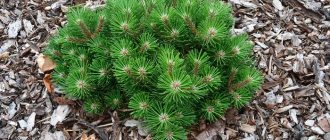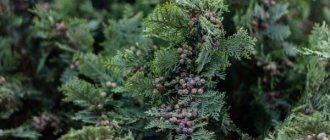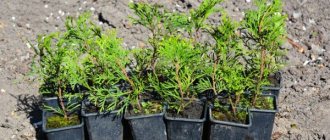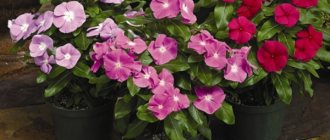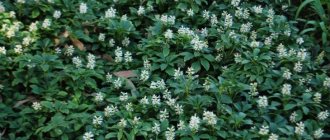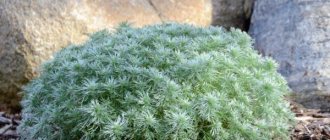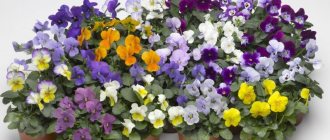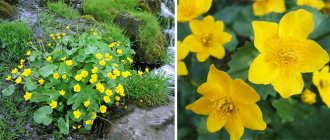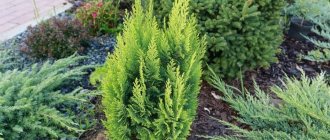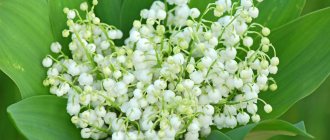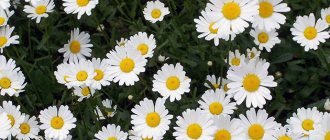Bushes and trees
0
379
Article rating
Kira Stoletova
The evergreen obtuse cypress Nana Gracilis is a beautiful coniferous plant with a cone-shaped, dark green crown. The birthplace of growth is Poland. It takes root well in all regions of our country, as it tolerates long and severe winters well.
Dumb cypress Nana Gratsilis
Brief information about the variety
- Needle color : from light green to rich green.
- Height : up to 5 m.
- Crown width : 1.5 m.
- Where it grows : western, central, southern, northern regions, the middle zone, the Urals (in the south, subject to abundant moisture, in the north, with good winter shelter).
- Planting features : sunny, wind-protected area with well-drained soil (light shade is acceptable).
- Immunity : high.
- Life expectancy : about 500 years.
Varieties and types
There are seven species in the genus, four of which are native to Asia and three from North America. In Russia, varieties of Japanese selection are most often grown, among which there are pyramidal forms, dwarf, and weeping varieties.
The most commonly grown in our gardens are:
- Nutkan variety. Conifers of this species grow very slowly, but they tolerate cold winters very well. If a frosty winter with little snow is predicted, then it is better to cover the Nootkan cypress. This is the most beautiful weeping variety.
- Lawson cypress has many varieties and is very popular. But growing this variety in the middle climate is problematic, since the plants do not tolerate frost well. This species has many dwarf varieties.
- Pea cypress tolerates the harsh winters of central Russia well. Prefers fertile, rich soil and sun. A very beautiful variety, unpretentious, frost-resistant.
Description of the plant
Cypress Nana Gracilis (chamaecyparis Nana Gracilis) is a coniferous perennial, reaching 3 - 5 m in height, growing in width to 1.5 - 2 m. The variety is characterized by slow growth, by the age of 10 the bush stretches only 0.5 m.
External parameters:
- the crown is voluminous, irregular in shape, can be cone-shaped, ovoid, asymmetrical;
- the branches are short, located close to each other, due to which they twist, taking on the shape of a shell;
- bark smooth, red-brown;
- the fruit is a small cone formed at the end of summer, inside there are 2 winged seeds;
- the needles are soft, smooth, up to 2 cm long, depending on where the bush grows, varies from light green to rich green;
- The root system is superficial, strong, highly branched.
How to care?
To grow Serbian Nana spruce, you must adhere to certain rules. Its development, appearance and lifespan depend on the care of a tree.
Watering and fertilizing
Newly planted and young spruce trees need good watering. It is necessary to water the tree as the soil dries, but do not pour in too much water. Otherwise, the root system may begin to rot. Watering is carried out from April to October.
About 10 liters of water are consumed per plant. As the spruce grows, the frequency of watering decreases, but the volume of liquid must be increased, based on the proportions of 10 liters per 1 m of tree height. In the hot season, in addition to moisturizing the root system, it is recommended to spray the crown of plants. This is necessary to prevent the needles from drying out, to remove dust, and also as a preventive measure against the appearance of spider mites.
The Nana variety can be fertilized with special compounds for coniferous plants. Only those trees that grow in infertile soil need frequent feeding. Usually it is enough to apply fertilizers 2 times a year.
Mulching and loosening
During the first two years after planting the plant, it is necessary to carry out the loosening procedure quite often. It is recommended to loosen the soil near the tree to a depth of 5 cm after each watering. The lower branches of a young plant may touch the ground and must be carefully lifted during loosening.
In mature spruce trees, small roots grow to the very surface of the soil, and they can be damaged during loosening. Peat or pine bark is used for mulching.
Rules for pruning and cleaning
With proper care, Serbian Nana spruce grows evenly and has an attractive symmetrical shape. In this case, it should be trimmed only for sanitary purposes, which includes trimming dried, broken and frozen branches. It is advisable to carry out decorative pruning in order to give the plant a certain shape in winter. It is recommended to cut no more than 4 cm from the branches. After the procedure, fertilizers should be applied and the tree should be treated with special products against diseases and pests.
In addition to pruning, it is necessary to clean the needles annually. This procedure is especially relevant for young trees, since their branches fit tightly to each other. In the depths, sunlight may not reach the branches, and they will also be poorly ventilated, and dust will begin to accumulate on the needles. Such conditions are favorable for spider mites and contribute to their reproduction.
Wintering
Nana spruce is a winter-hardy plant. However, too low temperatures can lead to freezing of part of the crown, which will then have to be removed. First of all, young trees need protection from frost in the first couple of years after planting. The soil around the trunk is covered with peat, and the plant itself is wrapped in agrofibre.
If the spruce grows in regions with harsh winters, then adult plants should also be covered to avoid freezing. This must be done until the tree reaches at least 10 years of age. If the plant has not been covered for the winter, it is necessary to periodically shake off the snow from its branches.
The Nana spruce is vulnerable not only in winter, but also immediately after it ends. From mid-February until the buds appear, the tree loses a lot of moisture, and the root system is dormant and cannot absorb the required amount of water. During this period, direct sunlight can burn the needles.
Landing
In nature, false blunt-leaved cypress grows in mountainous areas where the climate is quite humid. Therefore, an elevated, well-lit area is allocated for planting conifers. Light shadow from neighboring trees is acceptable.
When growing in the northern regions and the middle zone, choose a place protected from winter winds. Protection can be a wall, a fence, a decorative boulder on the lawn, or a large bush.
Selection of seedlings
To buy a good seedling, you should contact a nursery or specialty store. It is better to take a bush with a closed root system. There is no need to worry that it will dry out during the period between purchase and replanting to a permanent location.
It is advisable to take a plant that is 2-3 years old, has reached 40 cm in height, and has a developed root system. The shoots should be soft, natural color, without damage, signs of drying out, damage by insects and diseases.
Preparing the site
Cypress is easy to care for
The culture prefers to grow in light, airy, slightly acidic soil.
If the soil at the selected location is loamy, then 2 buckets of sand should be mixed into it; if it is sandy loam, then the same volume of clay.
To increase the fertility of the soil, add turf, peat, sawdust at the rate of 15 kg of each additive per 1 m2.
They also use fertilizing - superphosphate and potassium sulfate (100 g each) - the substrate is prepared in the fall, carefully dug up and watered.
Landing technology
Cypress trees are planted in the second half of spring before the heat arrives and soil moisture reserves are reduced. If the bushes are placed in a row, then a gap of 100–150 cm is left between them.
Description of landing procedure:
- dig a planting hole about 60 cm deep;
- the bottom is covered with drainage 15 cm thick, consisting of crushed stone and expanded clay;
- 1/3 is filled with fertile substrate enriched with mineral fertilizer for coniferous crops or a mixture of 40 g of superphosphate and 20 g of potassium sulfate;
- the seedling is placed in the hole so that the root collar is located at the level of the soil surface, the roots are carefully straightened;
- then they are covered with substrate, compacted, and watered;
- the ground is mulched with peat and bark.
After planting, for the first few days it is necessary to water the plant and spray it daily so that high air humidity is maintained around the crown. This measure promotes the survival and rapid rooting of the young plant.
How to choose cypress in a store
To grow at home, you need to purchase a healthy seedling that can adapt to environmental changes and withstand adverse factors. Conifers are difficult to take root in the house, so planting material must be of high quality.
Recommendations for choosing cypress for growing at home:
- Healthy, well-developed aerial part, covered with needles of a characteristic color for the variety.
- No signs of infection or insects.
- Closed root system.
- Preserved earthen lump on the rhizome.
- Moderately moist soil substrate.
- No yellowed or discolored shoots.
- The needles are elastic and dense.
To grow at home, you need to purchase a healthy seedling that can adapt to environmental changes and withstand adverse factors.
Homemade cypress grows and develops well if you create a favorable microclimate for it and provide it with proper care.
It is important to take into account the growing season and ensure peace in winter. Coniferous trees need fresh air and high humidity without waterlogging the substrate
Care
The Nana Gracilis variety does not require special care. In order for the bush to retain its decorative appeal, it is enough to water it, feed it, and carry out sanitary pruning.
Watering
Drought is destructive for conifers. Therefore, abundant watering is required. Adult bushes are moistened once a week, young bushes - 2-3 times. Add 10 liters of water.
Spraying is useful during the hot season. The crown of mature trees is irrigated once a week, young trees - every other day.
Feeding
The first year, the blunt cypress does not need additional sources of food. It uses up the nutrients added to the planting hole.
Starting next spring, fertilizing begins and is carried out annually until mid-summer. Food is added every 3 weeks. First, dig the drug into the soil, then water it to prevent chemical burns of the roots located near the surface.
| Type of fertilizer | Application rates |
| store-bought mineral complex for conifers of any brand | 100 – 120 g per 1 m2 |
| wood ash | 1 glass per bush |
| superphosphate | 30 g |
| potassium sulfate | 20 g |
They use either the first option - a ready-made complex containing all the necessary substances, or the remaining supplements. They cannot be combined.
Mulching and loosening the soil
The seedling does not need to be fertilized in the first year
After watering, the top layer of soil is carefully loosened. Be sure to apply mulch, which is peat, bark, and sawdust.
If mulching is regular, the frequency of watering can be reduced.
Haircut and trimming
Annual pruning is a mandatory step in the care of blunt-leaved conifers. The procedure is carried out at the beginning of spring: injured, shriveled, frozen branches are removed.
They also trim to form the crown. It is allowed to do this only in the second year of the seedling’s life. The branches are cut diagonally with a sharp knife or pruning shears.
In order not to harm the plant, you should not cut off more than 1/3 of the length.
In the fall, you can cut back the current year's shoots by a third, so the bush will become more luxuriant. It is also worth removing dying shoots with fallen needles.
Preparing for winter
Mature Nana Gracilis bushes are characterized by high winter hardiness and do not need to be covered. Young plants planted in a region with harsh and long winters must be protected from freezing.
Shelter preparation consists of several stages:
- the tree trunk area is hilled using peat and sawdust;
- shoots are tied to the trunk;
- The crown is covered with spruce paws and burlap.
It is also advisable to place a fine mesh netting around the bush to block the path for rodents.
Reviews of Cypress obtuse
Lidiya Slavtsova, 49 years old, Leningrad region.
3 years ago I bought 2 blunt-leaved bushes without a name, but the crowns of the seedlings were different. One was round, with flexible branches, while the other had hard branches stretching upward. Both were in partial shade, providing shelter for the winter. But the round one died out, and the other one took root. It turns green well. The soil on the site is slightly acidic, the place was cozy. The tree probably couldn't stand the frost. Now I want to buy some dwarf variety for a container.
Inna Samburova, 41, Skopin
Planted by Nana Gracilis, it has been growing for 4 years. The growth is really small, but the appearance of the bush is magnificent. One summer the tips of the branches turned yellow. After searching on the Internet, I decided that this was a consequence of the dry period. I began to regularly water the bush in the evenings. Over time, the needles recovered. I cover it for the winter by making a tent out of burlap. First, in the fall, I pour out 2 buckets of water, then mulch with sawdust. And when it’s frosty, I put up a shelter.
Reproduction methods
Ephedra obtuse is propagated by three methods:
- cuttings;
- layering.
Seeds
The method is long and complex, only breeders do it.
The seeds are collected in the fall and dried at temperatures up to 40°C. They can be stored for up to 15 years at 5°C.
To awaken them, they are stratified: take containers with a soil mixture (peat and sand in equal proportions), sow seeds, sprinkle with soil, and water well.
It is advisable to sow in December, then the seedlings will appear in mid-spring.
Until spring, the containers are kept in a cool place (for example, in the basement), then they are moved to a lighted room where the temperature is about 18°C. The substrate is watered moderately.
When the soil in the garden plot has warmed up sufficiently after winter, the young bushes can be replanted.
By layering
It is carried out in the spring according to the standard method: the lower shoot is pressed to the ground and buried.
For faster formation of roots near the buds on the shoot, it is advisable to make gentle cuts.
The following spring, the emerging young plants are separated from the mother plant and moved to the chosen location.
Cuttings
The easiest way to propagate a plant is by cuttings
The easiest and fastest method to get many new plants.
In spring, the upper parts of shoots up to 15 cm long are cut off. The lower needles are cut off. The cuttings are placed in containers with fertile soil.
To speed up the formation of roots, a greenhouse effect is created: containers are wrapped in transparent film, and the soil is regularly moistened.
In the fall, new plants are transplanted to the selected area. In winter, young bushes are covered with fallen leaves to prevent freezing.
Cypress pea fruit. Varieties
There are several varieties of this plant. Below we will present frost-resistant species that take root well in Russia.
- The pea cypress Filifera Aurea is one of the most frost-resistant. Its homeland is North America. There this variety of cypress grows up to 8-10 meters, but in our country its size does not exceed 3-5 meters. Although yellow cypress is drought tolerant, it is recommended to keep the soil moist as the tree grows very slowly.
- The pea cypress Filifera Nana prefers warm summers and mild winters. A suitable place for planting this variety is on a site where there will be enough cold and sun in the summer. The homeland of this plant species is Japan. The height of the cypress tree barely reaches 40 cm.
- Representatives of the Filifera Aurea Nana variety are very heat- and moisture-loving, so they often die in our latitudes after a long and cold winter. Despite this, gardeners find many ways to grow cypress. For example, they use insulation or plant the plant horizontally, and then bend the branches towards the ground as they grow.
- Pea cypress Plumosa Aurea is excellent for growing in Russia. It is not very picky and is quite resistant to frost. In order to grow a pea-bearing cypress tree on your site, all you need to do is water it and choose the optimal placement option. The maximum height of the tree is 10 meters.
Diseases and pests
The dull ephedra Nana Gracilis has a strong immune system. The only insects that can damage the crop are scale insects and spider mites.
The affected plant dries out, loses its needles, and dies. When a tick appears, the bush turns yellow and the needles fall off.
The insecticide “Nuprid” is effective against pests; it is treated in several stages at intervals of a week. Acaricides can also be used against ticks.
The most common disease is root rot. It appears due to illiterate care, waterlogging of the soil, and lack of drainage.
At an advanced stage, the conifers are destroyed, but at the initial stage, seedlings can still be saved. They are dug up, rotten sections of the roots are cut off, healthy ones are treated with a fungicide.
The treated roots need to be left in the air for a while to dry, and the surface of the wounds should be sprinkled with charcoal. Then the plants are transplanted to a new location.
Possible problems in growing
Failure to follow the rules of care may cause problems that will depress the plant, or even lead to its death.
The needles turn yellow and fall off
A common occurrence during the heating season. If the plant begins to turn yellow, it urgently needs to be moved further from the battery, watered and sprayed. This problem also occurs when direct rays hit the needles, then the cypress tree needs to be shaded or moved away from the window. The plant may turn yellow due to lack of watering or mineral nutrition. To identify a lack of soil, you should pour a generous amount of soil and observe the plant for several days, not forgetting about regular watering and spraying.
The tips of the pine needles are drying out
This is a sign that the plant is not receiving the required amount of moisture from the soil and air. Therefore, to restore it, you need to carefully remove the damage, water the plant and spray the needles of the cypress tree, especially the Nootkan tree, which has weeping shoots.
Cypress, planting and care
Pests
Like other indoor plants, cypress is damaged by pests. The big problem for him is scale insects and spider mites. The first damages the trunk, the pest can be noticed immediately. Brownish or yellowish tubercles will form on the trunk and shoots. The mite damages the needles themselves. If a cobweb appears on the branches and the needles begin to curl, this is a sign of the appearance of this pest on the plant. The most optimal thing is to treat the tree with Actellik.
Healthy! There are analogues of Actellik, but practice shows that this drug is the most effective. You can’t constantly treat it with it alone - it will cause addiction to the pest.
Such nuances of caring for Cypress representatives exist when keeping them indoors. If you want to grow an interesting plant in your apartment, slightly reminiscent of a thuja-like shrub, you should study in detail the growing conditions of a particular variety. Despite the fact that many of them have high winter hardiness and unpretentiousness, all of them require special attention when grown indoors.
Use in landscape design
A beautiful and noticeable plant from a distance, it looks great in the garden and near the house, either alone or in combination with other coniferous crops and deciduous shrubs.
Several planted conifers give the site a Mediterranean style. The variety is suitable for creating decorative hedges and patterned compositions in flower beds.
In cold climates, growing in pots is possible. During the warm season they are placed in the garden, and with the arrival of winter they are taken indoors.
Application in landscape
This bright and not picky plant, which pleases with its rich colors all year round, has found wide application in landscape design:
- it is planted near the local area or in secluded corners of the garden, so they become brighter and more attractive;
- several bushes planted in a group create the effect of a Mediterranean landscape;
- cypress is an excellent element for framing a fence;
- it is often used as a hedge;
- young specimens like to be planted in tubs, large flowerpots and placed next to a gazebo or terrace;
- conifers are planted along alleys, borders, and used to decorate city parks;
- The evergreen plant goes well with bluish or greenish-gray juniper.
Errors during cultivation
You can understand that mistakes were made during cultivation by the changed appearance of the plant.
- If the needles turn yellow, this is a sign of either moisture deficiency or poor quality soil with excess calcium in it.
- Destructive root rot is a consequence of lack or insufficient drainage. Replanting to a new location is required in compliance with agrotechnical rules.
- Yellowing or darkening of the tops of the needles is a symptom of a lack of moisture in the air. Spraying is necessary. If such a phenomenon is observed in a conifer growing in a pot, then insufficient and irregular watering should be suspected.
Planting a plant and choosing a seedling
It is advisable to purchase planting material only from nurseries. Plants must be in pots. To check whether the cypress tree has taken root well in the pot, you need to turn it over - if the soil does not spill out and stays in a tight lump, then such a seedling can be purchased. The needles of a young plant should be lush green, without signs of drying out.
The site and planting hole for cypress should be prepared in the fall. Choose a place for planting in the sun, not blown by winds and without drafts. It is undesirable that melt water does not stagnate in the selected area or that groundwater does not lie close to it. Although cypress trees love moisture, its excess and stagnation can be detrimental to the plant.
The planting hole is dug approximately 80-90 cm deep and up to 60 cm wide. It is necessary to make drainage at the bottom of the hole, since the plant does not like stagnant water near the roots. For drainage, you can use crushed brick, expanded clay, very coarse sand, and stones. The drainage layer should be at least 20 cm.
Already in the spring, the hole should be filled halfway with nutritious soil. In general, cypress trees grow better on fertile lands. Therefore, the pit is filled with a mixture of humus and turf, as well as peat and sand. Be sure to add mineral fertilizers to the hole before planting. Humus mixed with compost can also be used as a fertilizer.
The plant is carefully removed from the pot and lowered into the hole, covered with earth, watered and mulched. Mulch is necessary to retain moisture in the soil. Mulch will also prevent the growth of weeds. You can mulch with sawdust, straw, grass, peat. The mulch layer should be at least 7 cm thick.
Trimming
Cypress tree care involves mandatory pruning in spring and autumn. In the spring, after the snow melts, all dry and frozen branches are removed when pruning. The ends of frozen pine needles are also cut off. In the spring, formative pruning is also carried out, during which no more than a third of the entire green mass of the bush can be cut off in one haircut. Work only with a sharp and clean tool, making cuts obliquely. Typically, shrubs are given a pyramidal or cone-shaped shape.
At the end of the growing season, already in the fall, in order for the crown of the bush to become thicker and more luxuriant, it is necessary to remove a third of the total growth of the current year, while maintaining the decorative shape of the plant. Also in the fall, it is necessary to cut off all bare branches that do not have needles, since they will dry out anyway.
Although cypress trees are quite unpretentious plants, certain care rules should still be followed for their successful cultivation. After planting, cypress trees should be fed. In summer, frequent watering and sprinkling are necessary.
In spring, complex fertilizers should be added to the soil under cypress trees. You can use any composition for feeding garden plants. When watering, at least 100 liters of water must be poured under each bush; during drought, the number of waterings and the volume of water are increased. But when watering, it should be taken into account that the plant does not tolerate stagnant water. Therefore, it is important not to over-water the bushes, but to keep the soil moist.
Cypress trees love sprinkling - once a week they are watered with a diffuse stream from above. The soil around the bushes must be mulched so that the circles around the trunk are moist. The ideal mulch for cypress trees is peat mixed with wood chips.
